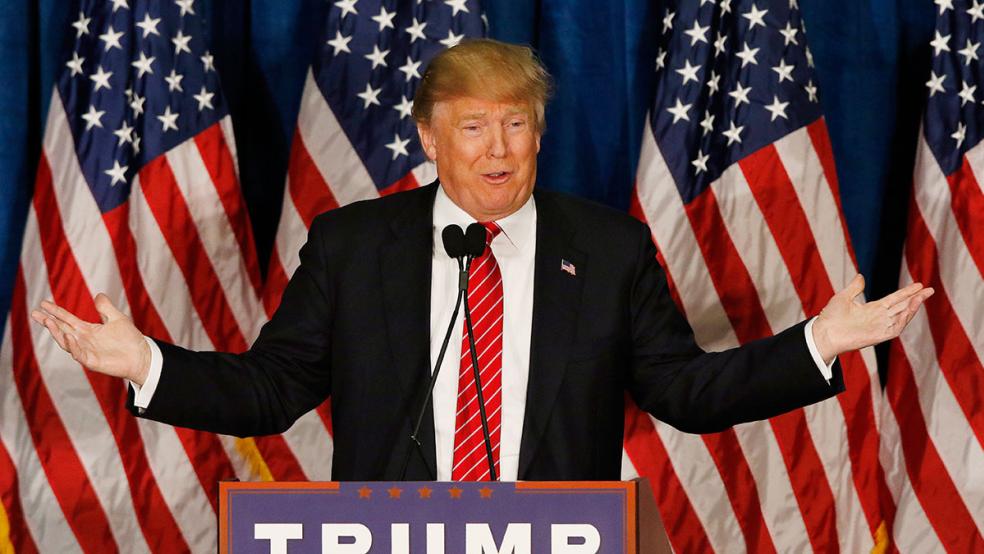For people paying attention to the Republican presidential primary, the next eight days will be a whirlwind of news, analysis, predictions and spin. After a leisurely start in February, the race has turned into a mad sprint, beginning with last week’s Super Tuesday elections, moving into tomorrow’s contests in Michigan, Mississippi, Idaho and Hawaii, and on through to March 15 and March 22, when a combined nine states and territories will vote.
The compression of contests in March, with contests every few days during the first three weeks of the month, tends to create a sense of urgency – as though the race can be won or lost on any given night.
Related: Newt Gingrich: Wake Up, Republicans – It’s Either Trump or Clinton
But after that, the pace slows considerably. By the end of the month voters will have allocated 64 percent of the delegates to the Republican National Convention in July. In the entire month of April, only 16 percent of the total will be added to that count, followed by just 8 percent in May. The final 12 percent of delegates don’t get apportioned until June.
More than half of Republican delegates will have been allocated by the end of the night on March 15, meaning that even a candidate running unopposed couldn’t clinch the nomination until then. But in a field of two or more, barring a hugely dominant candidate, nobody is likely to earn the 1,237 delegates (out of 2,472) needed to assure nomination on the first ballot at the convention until much later in the race.
So far, billionaire Donald Trump has secured about 42 percent of available delegates, and Texas Sen. Ted Cruz has 33 percent. Florida Sen. Marco Rubio sits at 17 percent, and Ohio Gov. John Kasich at 4 percent. (The use of the qualifier “about” when referring to delegate percentages is the result of broad disagreement over exactly how many delegates each candidate has earned. As of Monday morning, for example, Bloomberg, CNN, and the website FiveThirtyEight.com all showed different delegate counts.)
March 15 is seen as a particularly big day on the calendar because that is when the Republican National Committee’s ban on winner-take-all contests in early states is lifted. Florida and Ohio (as well as the Northern Mariana Islands) vote on the 15th and hand all of their delegates to the winner. Taking Florida’s 99 delegates and Ohio’s 66 will be a major coup for whichever of the remaining contenders get them. And while it wouldn’t guarantee him the nomination, winning both would make Trump extraordinarily difficult to catch – meaning that absent some sort of cataclysmic upheaval, it would close off any opportunity for a non-Trump candidate to get to 1,237 through the primary process.
Related: Cruz Gleefully Agrees with Trump: It’s Time for Rubio to Quit
Right now, his opponents are frantically looking for ways to prevent Trump from capturing Ohio and Florida, but even if he should take both, the story isn’t over.
In general, winner-take-all states are not the deciding factor in the race. Only nine states and territories allocate delegates that way, and their combined delegate count makes up only 16 percent of the total delegates awarded.
In the end, Trump might be able to cobble together the delegates he needs to carry a straight-up majority into the convention. But he can’t do it in a hurry.
Though he is comfortably in the lead, even if Trump were to win every single delegate that will be allocated between now and mid-April – a virtual impossibility because the majority of states award delegates proportionally, assuming a minimum threshold is met – he would still not have enough delegates to claim victory.
Related: Norquist Accuses Trump Naysayers of “Whining, Not Working”
Unless Trump collapses unexpectedly in the next two weeks, the likeliest scenario going forward is an effort not to beat him outright but to deny him a first-ballot nomination, throwing the convention into a floor fight in which delegates bound to vote for Trump on the first ballot would be free to vote their conscience on the second.
The big questions right now are 1) what strategy would best accomplish that goal – a consolidation of the field in which one anti-Trump candidate attempts to bring together all the non-Trump votes, or the preservation of a diverse field, in which a large field of choices allows Trump to win individual states but dilutes his delegate count? And 2) if a consolidation becomes the obvious solution to the GOP establishment’s Trump problem, will the weaker candidates willingly step aside?






